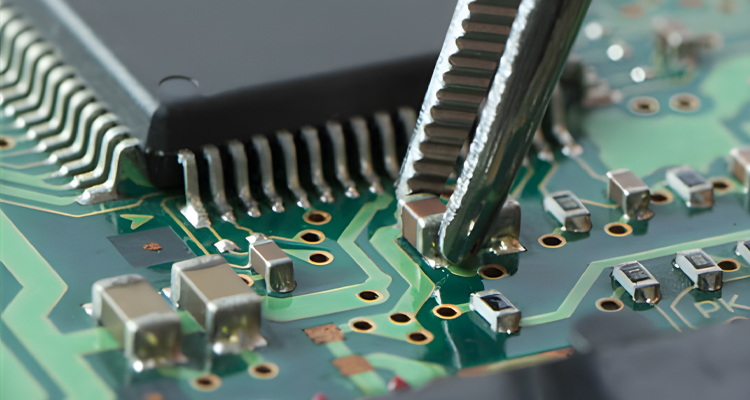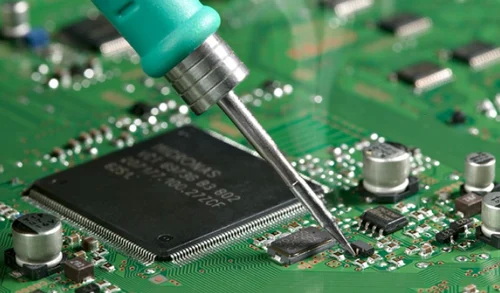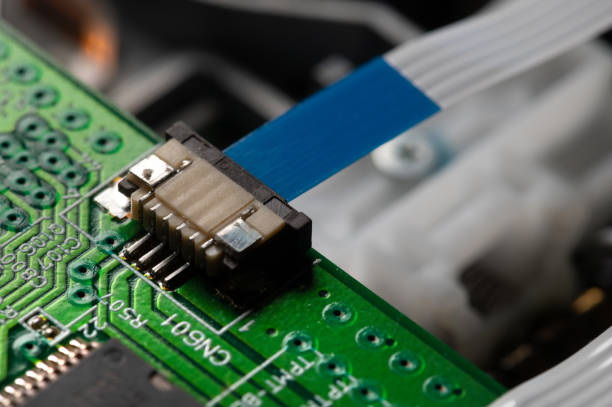Content Menu
● Introduction to SMT Stencil Carts
>> Core Features of Traditional SMT Stencil Carts
● Innovations Shaping the Future of SMT Stencil Carts
>> 1. Integration of Smart Storage Solutions
>> 2. Enhanced ESD Protection and Material Advances
>> 3. Modular and Adjustable Designs for Flexibility
>> 4. Mobility and Ergonomics Improvements
>> 5. Integration with Advanced Coating and Treatment Technologies
>> 6. Environmental and Space Efficiency
>> 7. Security and Access Control
● Market Trends Driving Innovation in SMT Stencil Carts
● Conclusion
● FAQ
>> 1. What is an SMT stencil cart, and why is it important?
>> 2. How do smart SMT stencil carts improve production efficiency?
>> 3. What materials are commonly used for SMT stencil carts?
>> 4. How do SMT stencil carts support stencil longevity?
>> 5. Can SMT stencil carts be customized for different stencil sizes?
● Citations:
Surface Mount Technology (SMT) stencil carts play a critical role in electronics manufacturing, providing organized, safe, and efficient storage and transport solutions for SMT stencils used in PCB assembly. As the electronics industry evolves rapidly, innovations in SMT stencil carts are shaping the future of production automation by enhancing workflow efficiency, stencil protection, and integration with smart manufacturing systems. This article explores the key innovations transforming SMT stencil carts, their impact on SMT assembly processes, and future trends driving the market.

Introduction to SMT Stencil Carts
SMT stencil carts, also known as stencil racks or stencil storage cabinets, are specialized equipment designed to store and transport SMT stencils safely within electronics manufacturing facilities. These carts are essential for organizing stencils systematically, protecting delicate stencil foils from damage and contamination, and enabling quick access during production line stencil changeovers[5].
Core Features of Traditional SMT Stencil Carts
- Multiple shelves or compartments for various stencil sizes
- Adjustable shelving for customized storage
- Anti-static materials or coatings to prevent electrostatic discharge (ESD)
- Mobility via wheels or casters for easy movement on the production floor
- Security features such as locking mechanisms to restrict unauthorized access[5][1]
Despite their fundamental utility, traditional stencil carts are evolving through technological advancements to meet the demands of modern SMT production environments.
Innovations Shaping the Future of SMT Stencil Carts
1. Integration of Smart Storage Solutions
A major innovation in SMT stencil carts is the integration of smart storage technology. Companies like Inovaxe have developed smart carts capable of storing thousands of reels and stencils in compact footprints while enabling rapid retrieval through sensor and LED guidance systems[2]. These smart carts:
- Detect reel or stencil removal and replacement automatically
- Use LED indicators to guide operators to the correct storage location
- Interface with MES (Manufacturing Execution Systems) or ERP (Enterprise Resource Planning) software for inventory management
- Reduce kitting and retrieval times from hours to minutes, significantly improving production efficiency[2]
This level of automation and connectivity transforms stencil carts from passive storage units into active components of the digital factory.
2. Enhanced ESD Protection and Material Advances
With the sensitivity of electronic components, ESD protection remains a priority. Modern stencil carts incorporate advanced anti-static materials and coatings to minimize ESD risks during stencil handling and storage[1][5]. Additionally, innovations in stencil materials themselves, such as laser-cut stainless steel and nickel-plated stencils, demand carts that can accommodate these high-precision tools without damage[7][8].
3. Modular and Adjustable Designs for Flexibility
New stencil carts are designed with highly adjustable shelving and modular configurations to accommodate a wide range of stencil sizes and types. This flexibility allows manufacturers to optimize storage space and adapt quickly to changing production requirements[5]. Some carts feature quick-release shelves and dividers that can be reconfigured without tools, streamlining stencil management.
4. Mobility and Ergonomics Improvements
Mobility enhancements include heavy-duty casters with locking mechanisms and ergonomic handles, allowing operators to move stencil carts effortlessly across the production floor while maintaining safety and stability[1][5]. Ergonomic design reduces operator fatigue during stencil changeovers, contributing to smoother workflows.
5. Integration with Advanced Coating and Treatment Technologies
While stencil carts themselves are storage devices, they play a role in supporting innovations in stencil longevity and performance. For example, advanced stencil surface treatments like StenTech's BluPrint™ CVD (Chemical Vapor Deposited) coating improve stencil durability and solder paste transfer efficiency[6]. Stencil carts designed to safely store these high-performance stencils ensure that the benefits of such coatings are preserved by preventing physical damage and contamination during storage and transport.
6. Environmental and Space Efficiency
Modern SMT stencil carts are designed to maximize storage density, reducing the footprint required on the factory floor. By optimizing vertical and horizontal space, manufacturers can store more stencils in less area, contributing to lean manufacturing principles[2][5]. Additionally, reusable frame systems for stencils reduce waste and environmental impact, aligning with sustainability goals[8].
7. Security and Access Control
To protect valuable stencil assets, some stencil carts now incorporate locking systems and access control features that restrict stencil handling to authorized personnel only. This reduces the risk of stencil loss, damage, or contamination and ensures compliance with quality control procedures[5].

Market Trends Driving Innovation in SMT Stencil Carts
The SMT stencil cart market is influenced by broader trends in the electronics manufacturing industry:
- Miniaturization and Precision: As electronic components shrink, stencil apertures become smaller and more intricate, requiring carts that can safely store delicate, high-precision stencils without damage[7][8].
- Automation and Industry 4.0: Increasing automation in SMT assembly lines demands stencil carts that integrate with digital inventory systems and support real-time tracking and management[2].
- Growth in Automotive and Medical Electronics: The rising complexity of PCBs in automotive electronics, electric vehicles, and medical devices drives demand for specialized stencil storage solutions that support high reliability and quality standards[7].
- Sustainability: Eco-friendly designs, including reusable stencil frames and materials, align with global sustainability initiatives in manufacturing[8].
Conclusion
Innovations in SMT stencil carts are revolutionizing how stencils are stored, protected, and managed in electronics manufacturing. The integration of smart storage technologies, enhanced ESD protection, modular designs, and ergonomic mobility features are enabling manufacturers to improve efficiency, reduce downtime, and maintain high-quality standards in SMT assembly processes. As the electronics industry continues to evolve with miniaturization and automation, stencil carts will play an increasingly vital role in supporting these advancements, contributing to smarter, more agile, and sustainable production environments.

FAQ
1. What is an SMT stencil cart, and why is it important?
An SMT stencil cart is a specialized storage and transport unit designed to organize, protect, and facilitate the handling of SMT stencils used in PCB assembly. It is important because it ensures stencil safety, improves workflow efficiency, and supports quality control in electronics manufacturing[5][1].
2. How do smart SMT stencil carts improve production efficiency?
Smart stencil carts use sensors and LED indicators to guide operators to the correct stencil location, automatically detect stencil removal and replacement, and integrate with MES or ERP systems for inventory management. This reduces retrieval and kitting times from hours to minutes, streamlining production[2].
3. What materials are commonly used for SMT stencil carts?
SMT stencil carts are typically made from welded or bolted steel constructions with anti-static coatings or materials to prevent ESD damage. Some carts also incorporate stainless steel or other durable metals to ensure long-term use and protection[1][5].
4. How do SMT stencil carts support stencil longevity?
By providing secure, dust-free, and ESD-protected environments, stencil carts prevent physical damage and contamination. This is especially critical for stencils treated with advanced coatings like chemical vapor deposition (CVD), which enhance stencil durability and solder paste transfer efficiency[5][6].
5. Can SMT stencil carts be customized for different stencil sizes?
Yes, many modern stencil carts feature adjustable shelves and modular compartments that can be configured to accommodate various stencil sizes and types, optimizing storage space and flexibility for diverse production needs[5].
Citations:
[1] https://www.gotopac.com/products/storage/carts/smt-transport-pcb-carts/stencil-carts.html
[2] https://inovaxe.com/smt-reel-storage/
[3] https://www.midwesttech.com/categories/shelving-carts-cabinets/pcb-stencil-smd-reel-carts-carriers/
[4] https://smt.asmpt.com/en/products/process-support-products/stencil-storage-systems/
[5] https://www.dobeter.com/smt-tools/Stencil-Storage-Carts.html
[6] https://www.stentech.com/company/cvd-treatment-for-smt-stencils
[7] https://sites.google.com/view/marketmotiveresearch/top-reports/smt-stencils-market-by-application
[8] https://www.lpkf.com/en/industries-technologies/electronics-manufacturing/smt-stencils-and-micro-cut-parts
[9] https://iconnect007.com/article/113509/a-brief-history-of-solder-stencil-manufacturing/113512/smt
[10] https://www.tradeindia.com/manufacturers/smt-stencil.html
[11] https://www.hemeixinpcb.com/company/news/what-is-a-pcb-stencil.html
[12] https://www.alibaba.com/showroom/stencil-smt.html




















